

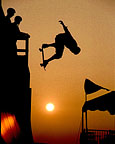

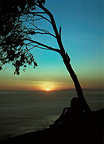







The Friedman Archives Newsletter
April, 2010
In this issue:
Where have I been?
| So it's been awhile since my last
newsletter. Yeah, things have been busy. My 12-year-old
desktop computer died, so a whole week of productivity was lost
configuring a new computer and learning Windows 7, Lightroom and
Office 2010 (and trust me, the learning curve is far from
over!). Attended the Photographic Marketing Association trade
show here in California and have been writing articles for David
Kilpatrick (one for Photoworld, one for Master Photography
magazine) and of course taking lots of pictures. But perhaps
the most memorable happening of the last two months was (were) the
successful back-to-back seminars in Copenhagen and Utrecht (which
is about an hour away from Amsterdam).
The total trip lasted about 2 1/2 weeks, and in the intervening week Carol and I drove through Germany and then, regrettably, in Amsterdam, which ranks right up there with New York City and Boston as a very challenging city in which to drive. Doesn't matter; we met so many wonderful people at the seminars (about 80 in all) that all the hiccups commonly associated with travel make things are quickly forgotten.
|
 |

RBL (Really Bad Light)
But I didn't come back with very good pictures. That was because it was the middle of March and the weather was dark and gloomy. "Just like there is no substitute for proper focusing" I proclaim in the seminar, "there is also no substitute for good light!". This is a difficult thing for some people to hear because many were brought up believing that if you shoot RAW and post-process you can make anything look good. Not so, and you could just HEAR the disappointment in the room. It reminded me of a story that fellow travel photographer Dan Heller (www.DanHeller.com) once told me about a trip to Ireland during gloomy weather: He never took his camera out. The light just wasn't good.
"But we wanted you to tell us how to take great pictures in our miserable light!" said a few vocal attendees.
So I went off-script and did something I almost never do: I let an entire seminar-filled room have a look at pictures I took from my camera before I had a chance to view and rank them myself. Pretty boring. Then I showed them postcards of the same area that were taken on a perfect day with blue sky and bright colors. "You can't get this by shooting RAW and post-processing!" I exclaimed. I think I left a roomful of people very disappointed.
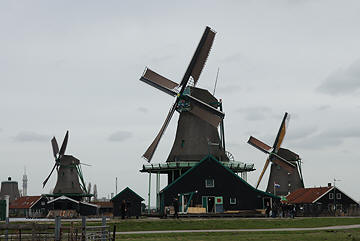


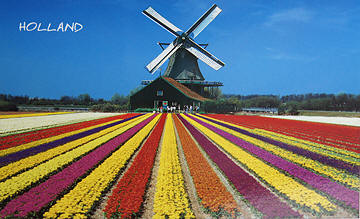
But seriously, there's very little you can do. Either the light is good or it isn't. Had I shot these in RAW, there's nothing I could have done to make them come out as good as the right shots. Good light is a thousand times more valuable than shooting RAW and post-processing.
So what did I shoot?
If your light is bad, forget about beautiful landscapes. Start concentrating on details instead to tell the story about your trip. Below is a sample of the shots I was able to get:
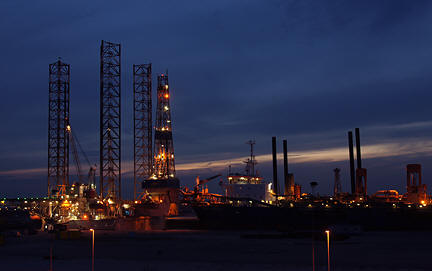 |
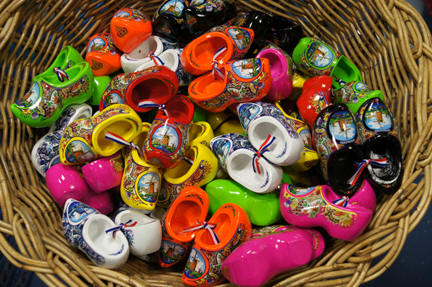 |
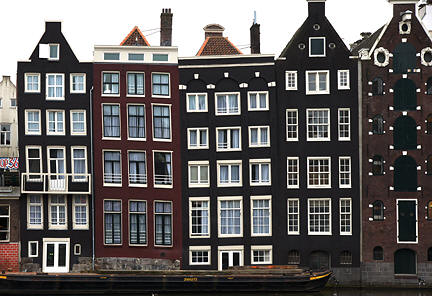 |
 |
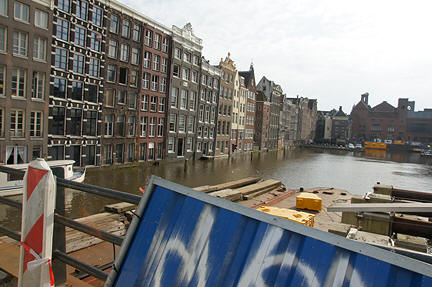 |
 |
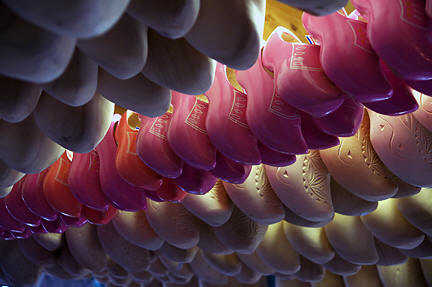 |
 |
Common themes are 1) Concentrate on things that generate their own light (instead of relying on daylight); 2) shoot details, 3) repeating patterns, and 4) the environmental portrait.
Okay, there is ONE trick I know for saving bad light (which I discuss briefly in my books), which is converting the image to black-and-white:


%2072%20dpi%20DSC08971.jpg)
Or you can turn it into an art piece (rather than an editorial / travel photo) by converting only part of the image to B&W:

But really, that's it! :-)
Your Camera as a Negative and Transparency Duplicator
Reader Janusz Bilinski has written a very detailed article about using your full-frame DSLR to copy negatives and transparencies, covering everything from the hardware required to the image processing settings to reverse the orange cast of color negatives. Although he specifically mentions the A900 in his article, any full-frame DSLR will do.
You can download the 12-page .pdf file here. Thank you, Janusz!!
A Wonderful Tool for Seeing Your Dust
Cleaning dust off my sensor has always been a 20-minute ordeal. You’ve been there: Stop down your lens, take a test shot, move it to your computer to examine for dust, and if you find some, good luck being able to target it accurately. I’d use all sorts of wet wipes, vacuums, blowers, and even my trusty LensPen, but no matter how hard I tried to provide good light I could never actually see the dust particles on the sensor, so I never knew if I got everything off without having to put the lens back on and go through the whole test process again.
That changed forever when I found the new SensorKlear Loupe from Lenspen at the PMA show. Simply put, it’s like a loupe used to view slides, only it has 4 bright LEDs pointing downward to illuminate the dust, and an opening near the bottom so you can reach in and grab the dust with whatever tool you please. Hear me now and listen to me later: this simple device REALLY makes a difference! Unlike every technique I’ve tried in the past, using the SensorKlear Loupe, you can plainly see the dust. (And, unlike similar products like Sensor Loupe by Visible Dust, the SensorKelar Loupe lets you look at the dust while you're cleaning it.) My lens cleaning time is now down to two minutes and there’s no need to ever take a test shot. Highly recommended.
The product is available at most photo retailers and at Amazon.com.
A500 / A550 book now available in Spanish!
The A500 and A550 cameras must be selling rather well, if the sales of my e-book on the camera are any indication. And now, the insanely busy (but not busier than ME! :-) ) and talented Francesc Garcia has translated this new book into Espanol, available here: http://friedmanarchives.com/alpha550/sp-index.htm
Plans for a detailed book on the Sony flashes are still in process...
Seminar and Workshop Updates
We were giving a seminar in Nova Scotia last year, and it proved so popular that the attendees asked that I return to conduct a "field workshop" - spend time shooting out in the field, practicing and reinforcing the concepts taught in the seminars, from light and composition to how to invoke specific camera settings in order to achieve a certain effect that the photographer has pre-visualized. Well, that workshop is now just a few months away, and so is another seminar a week later!
The workshop will take place in Yarmouth, NS on August 7-9, 2010. This is not a sightseeing tour - The philosophy behind these workshops is "the best place to photograph is wherever you are". The challenge will be to wander about, and ask yourself "How can I take this interesting landscape and make an interesting photo out of it?" (Seminar attendees will tell you that just because it looks good to you doesn't mean it will make others who weren't there say "Wow".) You can sign up for the Yarmouth Workshop here.
The very next weekend the original 2-day High Impact Photography Seminar will be given in Truro, NS, just a few hours north. (Those of you living in Toronto might wish to consider making the trip... it's quite nice up there! :-) ) You can sign up for the Truro Seminar here.
(In between those two events, I'm scheduled to give a day of training to Sony sales reps in the region!)
The next U.S. seminar is scheduled for July 10-11 in Orlando, Florida, and you can sign up for this one here.
You might say to yourself, "Gee, that's a pretty thin seminar schedule, Gary. Only 5 seminars this year?" The answer is "Well, we had planned on more (Albuquerque, Boston, Dallas, Northern California), but then we learned that we're going to become grandparents again, and so everything from September onward has been cleared from the schedule." You understand. :-)
Facebook and Blogs
It's interesting how new technologies traverse the technology adoption curve. Personal pagers were originally the gadget of choice for doctors and brain surgeons. Then the drug dealers embraced them, followed finally by the population as a whole. Consumer video (Beta or VHS) did the same thing - first it was only for the very rich, then the pornography industry adopted it (increasing sales and driving down the price) until finally your average Joe had a VCR.
The same is true for Facebook - first it was used solely by the Under 25 crowd, then child predators, then everyone else. (Including the 45-year-old-and-older crowd, much to the chagrin of the teenagers.)
All this is a prelude to announce my slow transition to new media. As my first step I've just set up a fan page on Facebook. Just search for "The Friedman Archives" and become a fan! I hope to post small things on a continuous basis - sometimes an interesting picture, sometimes an insight. (Update: The minute this newsletter was published, Facebook changed their website and their terminology from "Become a Fan" to "I Like". Seems like technology is changing just a little too fast nowadays. :-) )
And soon this newsletter will become a blog. It's an idea I've resisted for awhile, since I've always believed that less frequent but thoughtfully-written newsletters have more value than shorter items written in a hurry, more because the writer has to post something and less because they have something meaningful to say. (On the other hand, we can see how much the rest of the print industry values the role of editors when it comes to vetting out useful information from the uninformed opinion.)
But there are some compelling reasons to switch to the new format. Blogs have an entire 'nuther mechanism for being found like Google Blogsearch and Technorati.com blog directory. Blogs can appear in your RSS reader inbox automatically (or be emailed to you as they are now, and will be less likely to be arbitrarily labeled as Spam). And they integrate seamlessly into link sharing and bookmarking websites such as digg and de.lic.ious. Like the way Facebook is now supplanting email as the communication mechanism of choice, so I believe blogs will replace the traditional newsletter.
Until next time...
-Gary Friedman
P.S. - A note about my group shots: Generally speaking the seminars are so dense that there's barely five minutes to take a shot. This means that the traditional time-consuming ritual of posing and moving people so that all faces can clearly be seen usually have to be forgoed (foregone?).
| Previous Newsletter - February, 2010 | Newsletters Main Page |
Back to the Friedman Archives Home page